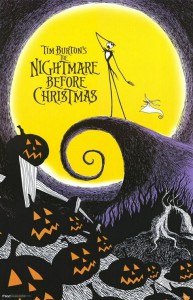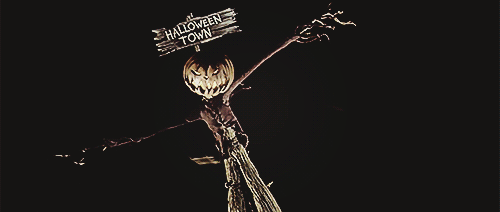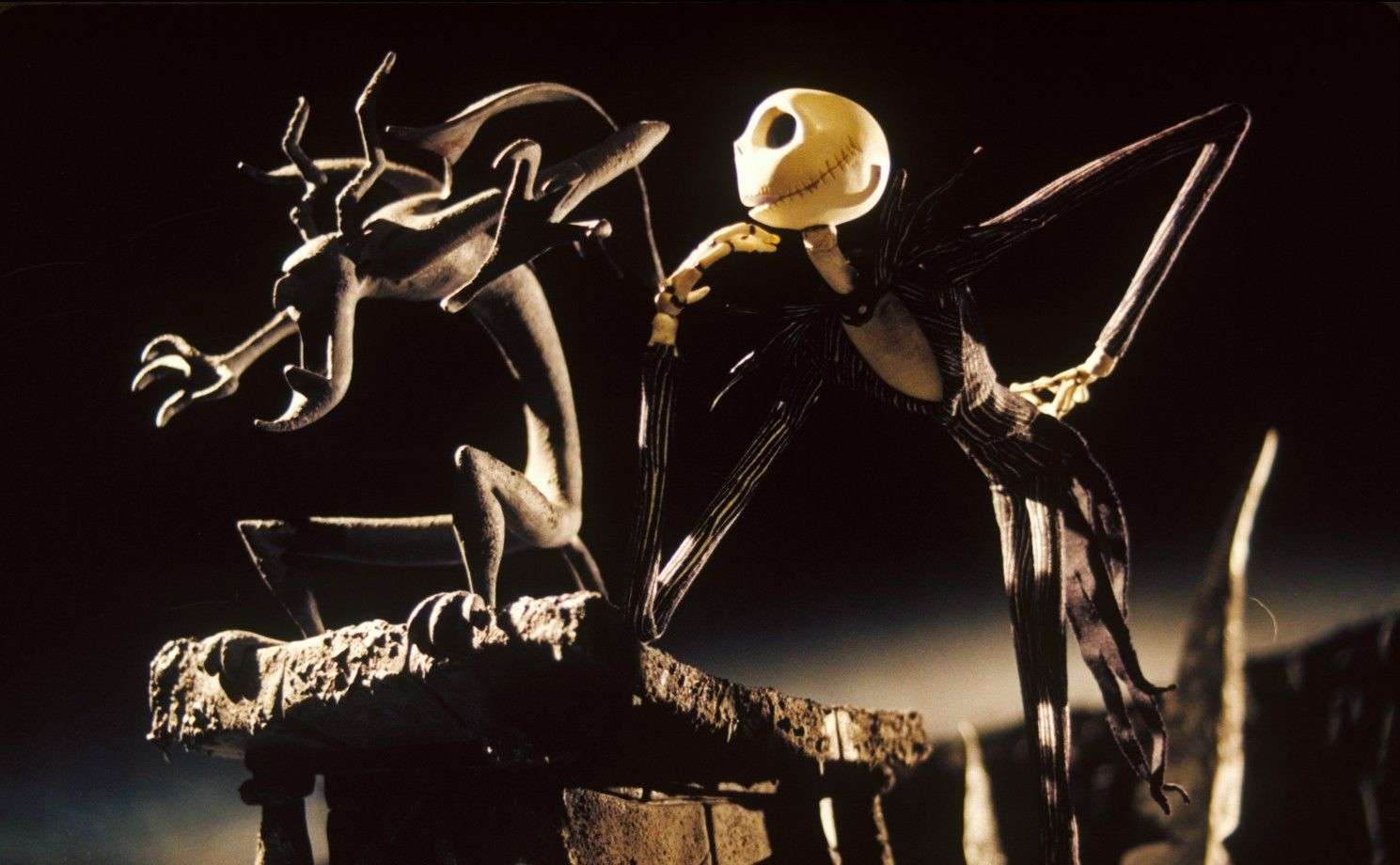The Nightmare Before Christmas
Directed by Henry Selick
Written by Caroline Thompson
USA, 1993
Every year around this time, Disney puts The Nightmare Before Christmas back in movie theaters. In Los Angeles, it’s even playing in “4D.” Jack Skellington and the other denizens of Halloween Town have showed up in video games and merchandise both official and of the Hot Topic variety. It’s ironic that the Mouse House has so enthusiastically embraced the film. In 1993, when Nightmare first hit theaters, Disney was so skittish about its tone and content that it was released under the Touchstone label instead of the castle with the shooting star. But the company is nothing if not canny, and a sizable box office take and devoted fanbase has done more than enough to convince them to bring Nightmare into the mainstream fold over the past two decades.
Nightmare is a game-changing landmark in the history of stop-motion animation. Never before had a world of puppets felt so fully realized and immersive. The camera swoops and bounds through the action, rather than staying at a static remove. The motion of the characters and objects is fluid and dazzling. One incredible shot is an extreme close-up of a doorknob, with the image of Jack reaching for it reflected on its surface. It’s the perfect kind of detail, because it’s a shot that a live-action film would have, but when one thinks about it, you realize that it took some technical ingenuity to pull off.

The movie also forever bound together stop-motion animation and the outsider sensibility in the collective mind of popular culture. With some exceptions, most prominently Aardman’s work, it seems like a given that these kinds of films will try to be scary, quirky, or both. Of course, stop-motion has been the playground of the offbeat for a long time. Just look at the work of Jan Švankmajer, or The Adventures of Mark Twain, or the Oscar-nominated short The Sandman, which feels very Nightmare-esque despite preceding it by 2 years. But Nightmare made the dark sensibility cool when acted out with puppets or clay, and stop-motion was an acceptable space for stylishly ugly aesthetics.
Yet despite the film’s importance and influence, it’s never managed to fully click with me. Each time I’ve watched it, I’ve been enthralled by the first 20 minutes or so. The opening sequence is a fantastic mood-setter, establishing the vibe of the film and the character of Halloween Town perfectly. And just as quickly, it sets the story in motion, introducing Jack’s existential dissatisfaction with great economy. Then it propels him into a new environment, and we get to share his sense of wonder as the setting turns from German Expressionism to Dr. Seuss like a coin’s been flipped. It moves brilliantly, in a way few films do.

But after that beginning, nothing that happens is nearly as arresting. The pace doesn’t let up, but the story is stuck in the same mode, with various players uncertainly hemming around the vague idea of “Christmas” for a long time. None of the songs are as memorable or well done as “This is Halloween” or “What’s This?” The characters don’t change from the way they are when we initially meet them. While the film continues to be great to look at, it gets weirdly boring. And it’s unclear just what we’re supposed to take away from the story. Stick with what you know? Don’t try to do anything different if you’ve grown restless in life?
Perhaps I would be more attached to The Nightmare Before Christmas had I seen it as a child. But I didn’t, and thus have no nostalgic connection to the denizens of Halloween Town. I recognize the greatness in the movie, but I can’t love it the way so many others do. Still, it’s an established classic, and it’ll likely keep getting revived each Halloween for decades more to come.
— Dan Schindel

